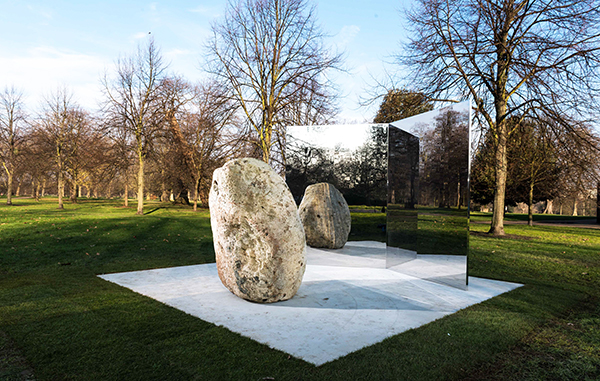CulBeat Express
2019.08.18 12:18
이우환 'Open Dimension'@허쉬혼뮤지엄조각정원, DC(9/27-9/13, 2020)
조회 수 1234 댓글 0
LEE UFAN: OPEN DIMENSION
SEP 27, 2019–SEP 13, 2020
Hirshhorn Museum and Sculpture Garden

On view September 27 through September 13, 2020
“A plain, natural stone, a steel plate—which is a solidified form of components extracted from stone—and existing space are arranged in a simple, organic fashion. Through my planning and the dynamic relationships between these elements, a scene is created in which opposition and acceptance are intertwined.”—Lee Ufan
Lee Ufan: Open Dimension is an ambitious site-specific commission by the celebrated Korean artist Lee Ufan. The expansive installation, featuring 10 new sculptures from the artist’s signature and continuing Relatum series, marks Lee Ufan’s largest single outdoor sculpture project in the US, the first exhibition of his work in the nation’s capital, and the first time in the Hirshhorn’s 45-year history that its 4.3-acre outdoor plaza has been devoted, almost in its entirety, to the work of a single artist.
Each of Lee’s sculptures responds to the Museum’s unique architecture and continues his practice of placing contrasting materials, such as stainless steel plates and boulders, in dialogue with each other to heighten awareness of the world, in his words, “exactly as it is.” Leaving the materials mostly unaltered, Lee arranges them with careful attention to the subtle nuances of the site to foreground the visitor’s encounter with the art as it unfolds in time and space. The Hirshhorn’s cylindrical building amplifies the experience by offering myriad viewpoints from which visitors can contemplate the works. The title Relatum, which Lee gives to all his sculptures, reflects his vision of art as an opportunity to experience an “open dimension,” a space in which we can consider the relationships among humans, things made by humans, and the broader natural world.
Lee rose to prominence as part of an influential movement—Mono-ha (or “school of things”)—of young artists working in Japan in the late 1960s and 1970s. Lee, the movement’s main theoretician, explains the method of Mono-ha as one not of making but of mediating, attempting to create art that reveals the world as it is. His work in later decades has evolved into a thoughtful, highly refined practice in which he generates complex artistic situations with the barest of means. “By limiting one’s self to the minimum,” he writes, “one allows the maximum interaction with the world.”
A complementary installation of the artist’s abstract Dialogue paintings is on view in the Museum’s third-floor galleries from September 2019 to March 2020.
LEE UFAN
Widely renowned as one of the most important artists of the past half-century, painter, sculptor, poet, and writer Lee Ufan (b. 1936, Ham-an, Kyongsang-namdo Province, South Korea) lives and works primarily in Japan and France. He is a founder and major proponent of the avant-garde Mono-ha (“school of things”) group, which in the 1960s and 1970s became one of Japan’s first internationally renowned contemporary art movements, and his current practice encompasses sculpture, installation, ceramics, painting, and works on paper. In 2010, the Lee Ufan Museum, dedicated to the artist’s oeuvre, opened on the Japanese island of Naoshima. Lee has been the subject of more than 140 solo exhibitions around the world, including Resonance at the 52nd Venice Biennale (2007) and Marking Infinity, a retrospective at the Solomon R. Guggenheim Museum, New York (2011). In 2014, the Palace of Versailles presented 10 of Lee’s monumental sculptural works throughout its historic grounds. Other recent exhibitions of his work have been held at the State Hermitage Museum, St. Petersburg (2016); Galerie de Sèvres, Cité de la céramique, Paris (2016); Gwangju Museum of Art, South Korea (2017); and Serpentine Sackler Gallery, London (2018).









